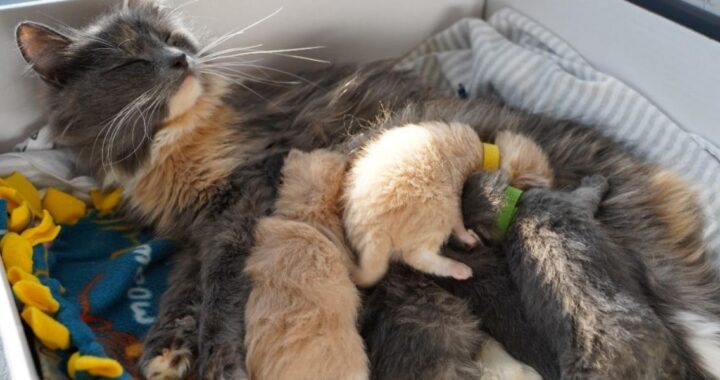It’s raining cats and dogs! We know, it sounds like a bit of an exaggeration, but it is raining cats. That’s right, the beginning of spring doesn’t just bring an abundance of water, we also experience an increase in the birth of kittens, which we like to call “kitten season.” Due to warmer weather, kitten season normally takes place between the months of March and October.
Kitten season also unfortunately means that in many places across the country, including Eastern Washington, where the cat population exceeds the number of helping hands available, there is an exponential increase in kitties likely to face homelessness.
What does kitten season mean for shelters like SAFe?
Early spring is when we start to take in more kittens as young as 0-4 weeks old. As adorable and cuddly as our little friends are, during the earlier stages of their lives they are very vulnerable and have specific needs.
“Neonates,” kittens up to 4 weeks old, are fragile and will require the most intense maintenance and life-saving care. They are unable to regulate their own body temperature or eat solid foods. They’re also unable to urinate or defecate without stimulation, which mom normally provides by cleaning/licking them.
Bottle babies, which are orphaned neonates, are especially vulnerable during this stage of their lives. Our dedicated foster families offer around-the-clock care to make sure the bottle babies are getting their milk replacement formula every few hours. Kittens will only begin to open their eyes between one week and 12 days after birth. They will begin to walk around 3 weeks old and begin eating solid foods at about 4 weeks old.
What does kitten season mean for our community?
With all the additional responsibilities that kitten season brings, it is also important to have more helping hands! Times like these, when we have so many more cats than usual who are in care, is when SAFe needs the help of more volunteers and foster families available to keep the kittens healthy and comfortable while finding loving homes.
This is also a time when more cats need spay/neuter surgery. Cats are able reproduce as early as between four-five months old! To prevent further litters of kittens who need homes, the kittens are able to safely undergo alternation when they reach 2 pounds, which is typically around two months after they are born.
Another one of the many ways to help SAFe during this time of the year is by sending supplies from our Amazon and Chewy wish lists for kittens, specifically bottle feeding supplies for neonates and special kitten food for weaning babies.
Regardless of how immense of a commitment that kitten season proves to be every year at SAFe, the help and support of people like you in our community makes it possible – and for that we say thank you!




